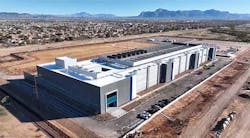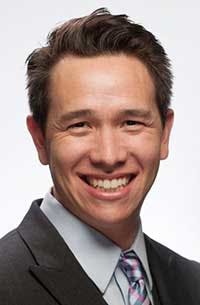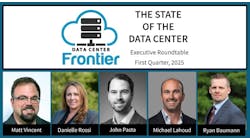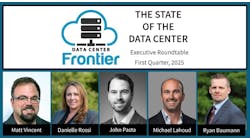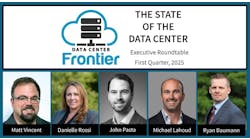Data Center Insights: Steven Lim of NTT GDCA
The Data Center Frontier Executive Roundtable features insights from industry executives with lengthy experience in the data center industry. Here’s a look at the insights from Steven Lim from NTT Global Data Centers Americas.
Steven Lim is responsible for the strategic direction of the company’s Product Management and Marketing teams. Over his career, Steven has led marketing teams to generate significant revenue growth and enterprise value. He has built corporate brands, shaped the customer experience, and structured unique go-to-market solutions. Prior to joining RagingWire, Steven served as a Customer Marketing Leader at LinkedIn and Vice President/Head of Marketing at Vantage Data Centers, where he was part of a senior executive team that increased the company’s valuation five-fold. Previously, Steven had management responsibilities at Equinix, McAfee and Cisco. He earned an MBA from the Graziadio Business School at Pepperdine University, as well as a Bachelor of Arts degree from the University of California, Berkeley.
Here’s the full text of Steven Lim’s insights from our Executive Roundtable:
Data Center Frontier: What will delivery timetables for new data center capacity look like in 2023? Will the combo of supply chain issues, power constraints and staff shortages have an impact on supply?
Steven Lim: NTT GDC still has significant development plans both in the US and abroad to build and deliver a great deal of new capacity in multiple markets next year. The challenges in delivering this new capacity are not small, as supply chain delays have persisted for several years, and now power shortages are becoming real in many established markets. At NTT, we are doing our best to mitigate these challenges with a focus on planning and engagement with our vendors — essentially creating a more robust supply chain with multiple suppliers that have to have a multi-faceted supply chain and multiple suppliers that can flex as needed.
Furthermore, managing long-term planning and project timelines is key to minimizing delays and supply chain constraints -- forecasting changes now, restructuring thought processes and planning processes, running projects in parallel and moving inventory across multiple projects to avoid delays.
Throughout this process, we also maintain a great deal of transparency with our clients about what’s happening so everyone has clear expectations and can plan properly from their perspective as well.
Data Center Frontier: What’s the state of the edge computing market, and how does it compare to your expectations? What are the use cases that are gaining traction?
Steven Lim: Whenever we talk about the edge computing market, I think its important to define what we mean by edge. I feel like this term is becoming a broad all-encompassing topic that is everything from handheld devices with compute power, to containers at the base of cell towers, to data centers in smaller markets. For our purposes, we are primarily thinking about where data centers should be built and located, and how we need to get closer to end customers.
We all know that productivity tools, collaboration tools, AI/ML, 5G are all driving growth in edge computing market as data and compute needs to be done faster and therefore closer to the point of origin. As a result, we are seeing an increase in demand in tier-2 cities, and we are investigating how we can serve this growing part of the data center market.
Within that context, we are also working on newer designs in the data center itself which might allow us to build at smaller scales and therefore deliver capacity faster in these smaller markets. That said, for edge to work, connectivity back to the core markets are still critical and that’s where NTT’s strengths and future strategies are poised to help.
Data Center Frontier: How would you assess enterprise IT demand, and what do you see ahead in 2023?
Steven Lim: At the start of the COVID pandemic, we saw the hyperscalers move aggressively to capture a large amount of the available capacity in almost every major market. At the same time, our enterprise clients took a more cautious approach to expansion given the initial uncertainties of everything at that time. As a result, many of those enterprise clients were left out when they did make decisions as the hyperscalers had consumed the vast majority of available capacity.
As we sit today, many of those same enterprises are now trying to catch up with their own data center requirements and build out for the future. These enterprise customers have started adopting some of the same buying strategies and sophistication as hyperscale customers, and they’re buying larger footprints around the world to take advantage of available capacity in the markets they’re looking for. We don’t anticipate this to slow down anytime soon, although the rapid shift in economy and looming recession may change that outlook yet again.
To keep up with this demand today, we are having to look at larger campuses and buildings to support our customers of all sizes. NTT must continue to maintain flexibility while offering the right mix of technology, products, and services to help enterprise clients effectively manage the growing complexity of their infrastructure.
Data Center Frontier: What will be the important themes in sustainability in 2023 for data centers and cloud operators?
Steven Lim: Sustainability in the data center industry is no longer just a talking point — providers, clients and partners are all having to look at real ways to improve our efficiency and sustainability at every level of our business. Simply purchasing RECs is no longer good enough, and our teams are working to figure out how we can adopt and implement real change. We all know data centers consume a great deal of energy, and how we use that energy efficiently will constantly be a challenge.
NTT has made significant climate and sustainability commitments, and our data centers are obviously a large part of that. I don’t believe there are any consistent themes yet with regards to the data center and sustainability, but I think there are several areas of focus that seem to be emerging.
First and foremost is a move to denser environments and new corresponding cooling solutions such as submerging chips and computers in liquid. We also continue to look at alternatives for back-up systems such as moving from diesel to HVO in all of our generators.
Finally, we are working with power providers in all of our markets to uncover ways to develop green energy and move to completely renewable power sources. While all of these represent parts of the larger story, it remains to be seen what broader trends will drive adoption across our industry.

